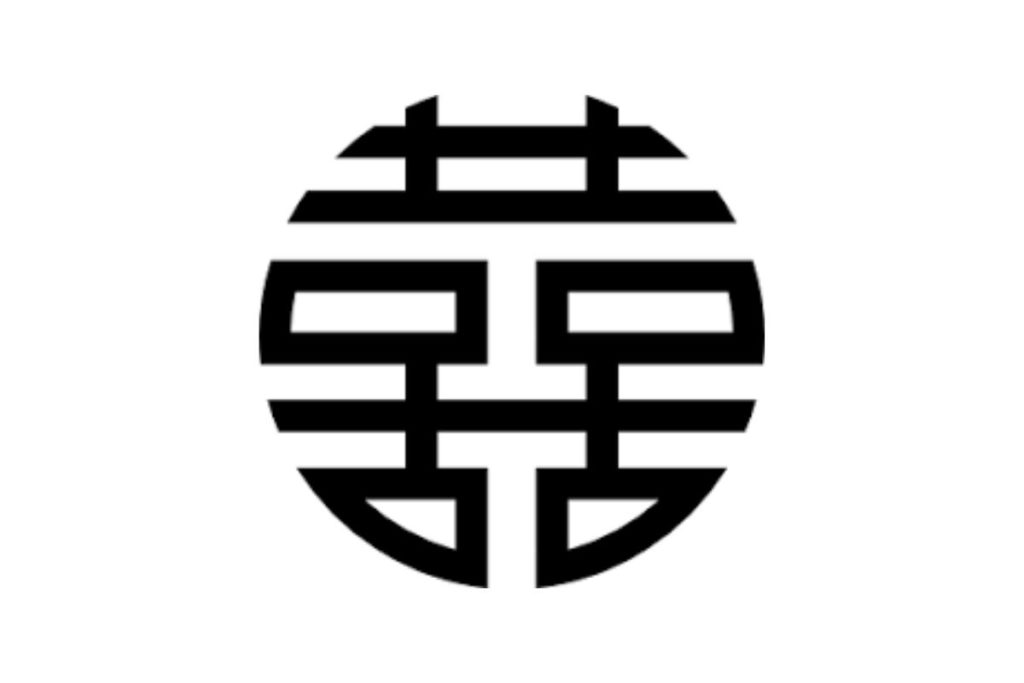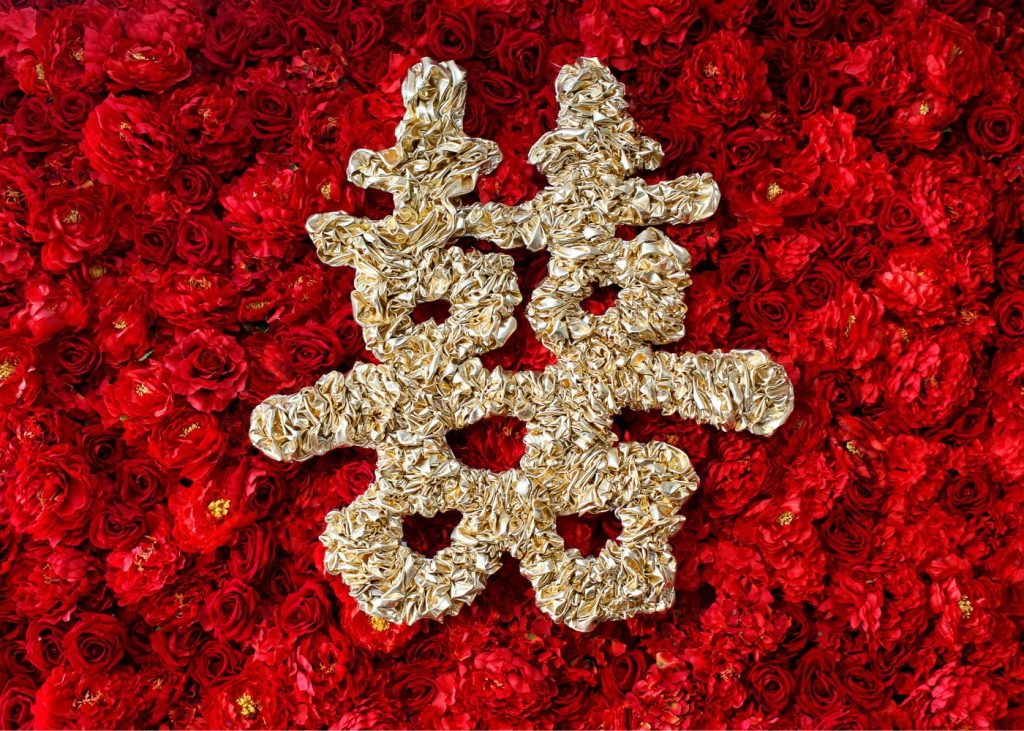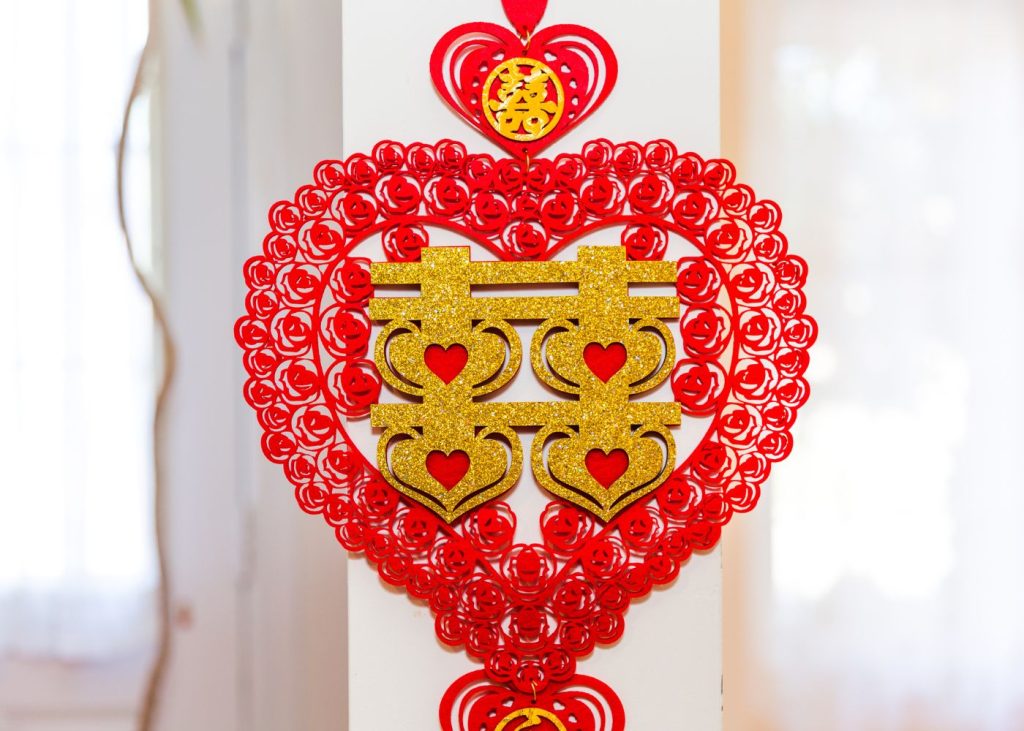Double Happiness is a traditional Chinese symbol often associated with weddings and marriages. It's believed to bring good luck and happiness to newlyweds. The Double Happiness symbol is made of two characters, xi, meaning happiness or joy, and the symbol is often written in red to symbolize good luck.
What is the meaning of the Double Happiness symbol in China?
Chinese letters are logograms and don’t comprise an alphabet. The Double Happiness sign is formed by combining two characters of xi. It becomes Shuangxi, which translates to Double Happiness. It’s commonly referred to as a type of ligature in writing and typography.
The symbol is also commonly used in decorative items, such as wall hangings, wedding invitations, and other things. In some cases, the symbol is even used as a tattoo or other form of body art.
In addition to its decorative element, the Double Happiness symbol is also seen as a good luck charm. Many people in China believe that the symbol brings good fortune and happiness. They often display the symbol in their homes and businesses to attract these positive energies.
Why Does 88 Mean Double Happiness?
The number 8 is considered a lucky number, and having two of them is seen as even luckier. It’s used at weddings and other special occasions to symbolize Double Happiness.
Further, the number 88 is linked with happiness in Chinese culture because the Chinese word for “eight” sounds similar to the word for “prosper” or “wealth.” 88 is often associated with good fortune.

Double Happiness Symbol’s Other Meanings
The meaning of the Double Happiness symbol has now transcended Chinese culture and tradition. As a modern calligraphy symbol, it has taken on new and varied meanings.
A Sign of Love and Harmony: In Chinese culture, happiness is said to come in twins (think yin and yang or male and female), and the sign itself represents love and harmony in a relationship. It is still used in traditional weddings today to ensure that couples remain happily married.
A Loyalty Symbol: The symbol serves many functions in romance and is thought to strengthen the relationship of unmarried couples. It’s generally used as a charm by singles to attract faithful partners.
A Good Luck Symbol: While the Double Happiness symbol originated from Chinese wedding traditions, it is now widely used in Singapore, Hong Kong, Turkey, Vietnam, Indonesia, Thailand, South Korea, and India.

What is the History of Double Happiness?
The Double Happiness sign originated during the Tang Dynasty. The symbol became associated with traditional Chinese wedding ceremonies and other special occasions in the centuries that followed. It remains a popular symbol of joy and happiness in China today.
The Legend Behind the Symbol
According to legends, a student was on his way to the capital to take a royal examination to become a court minister.
But he became ill on the way. A herbalist and his young daughter looked after him in a mountain village. The student fell in love with the young girl. When it was time for the boy to depart, the girl offered him half of a rhyming couplet, expecting he would return with a counterpart.
After qualifying for the examination, the emperor gave the student a final test. He was asked to finish a rhyming couplet by chance, which happened to be the missing half of the girl’s couplet.
In one fell swoop, the student finished the poem, impressed the emperor, and married the herbalist’s daughter. They wrote the xi character twice on red paper at their wedding, which evolved into the Double Happiness symbol we know today.
The Popularity of the Symbol
During the Qing Dynasty in China, the emperor’s wedding spot was illustrated with the Double Happiness symbol on lanterns and doors.
The Double Happiness signs were featured on royal robes worn by the Emperor and Empress Xiaoding at the grand wedding of the eleventh emperor of the dynasty, Zaitian or Emperor Guangxu.
The Double Happiness symbol appeared on ruyi scepters as a sign of good luck and love in royal ceremonies. As a result, the symbol was associated with royalty and nobility, quickly becoming a famous symbol in Chinese culture.

Is Double Happiness Only for Weddings?
Double happiness is generally gifted to couples to bless them at weddings. However, with time, it’s considered a piece of good luck too. It’s a popular theme for centerpieces, paper cutouts, lantern displays, and home decorations during the Lunar New Year.
Because red and gold are considered lucky, there are Double Happiness stickers on packed fruits and goods and beautifully decorated cookies, sweets, and macarons.
The symbol is now used for more than just weddings, with lamps, tableware, scented candles, accessories, key chains, and other home decorations bearing the motif.
You can find it on earrings, necklace pendants, charms, and rings, made of gold or silver. Few designs are bejeweled, while others are carved from wood or jade. The symbol is also used as a tattoo design.
What is Double Happiness Upside Down?
In Chinese calligraphy, when you place a character upside down, it means “arrived.” When the Double Happiness symbol is reversed, it indicates the excellent time or happy time has arrived.
Double Happiness and Feng Shui
Due to its associations with love and marriage, the symbol is regarded as a classic feng shui cure. Geomancy prioritizes balance and symmetry, making the Double Happiness symbol a powerful love charm.
Many people believe that someone looking for true love can use it to find their partner. It’s also said to have a doubling effect, increasing happiness, fortune, and success.
If you’ve found this article helpful, check out our post on the cricket symbolism’s unknown meanings.

